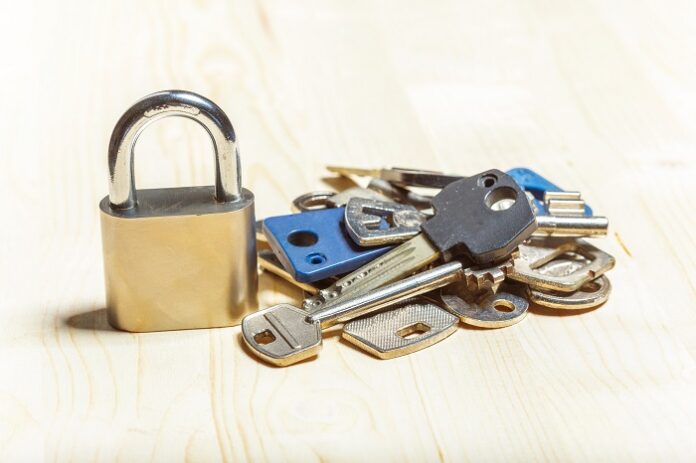Choosing and installing the right locks is crucial for maintaining home security and peace of mind, whether you’re moving into a new home or upgrading your existing locks. This article offers tips from expert locksmiths on selecting the right locks and implementing proper installation techniques to ensure your home is secure.
Choose Locks That Are Right for Your Home
With so many options available, the thought of choosing the right locks for your home might seem a bit overwhelming. By considering these factors suggested by expert local residential locksmiths, you can make an informed decision about choosing the right locks for your home:
Security
Your locks should provide adequate security for your home and family. Consider the level of security you need based on the crime rate in your area, the value of your personal belongings, and the number of people who have access to your home.
Durability
Your locks should be durable enough to withstand frequent use and weather conditions. Always look for locks made from high-quality materials that will withstand harsh weather conditions and heavy use.
Budget
Your locks should fit within your budget. Before making your decision, consider the cost of the locks, installation, and maintenance.
Popular types of locks for homes include deadbolts, door knob locks, and smart locks. Deadbolts provide extra security by making it harder for entrants to forcefully open the door. Door knob locks are more economical and easier to use, but they may not provide the same level of security as deadbolts. Smart locks offer greater convenience and protection and enable you to lock and unlock your door remotely using your smartphone.
When choosing locks for your home, it’s important to consider the size and type of your door as well as the level of security you need. For example, a smaller lock may be suitable for a sliding glass door, while a larger lock would better suit a front door.
Proper Lock Installation Techniques
Here are some installation techniques to ensure that your locks are installed correctly and functioning as they should:
Measure the door
Before installing a new lock, measure the door to ensure that the lock chosen will fit properly. Measure the width of the door and the height of the lock cylinder to be sure they are compatible.
Prepare the door
Before installing the new lock, remove the old lock and any obstacles that may be in the way. Remove any screws holding the old lock in place, and carefully remove the old lock from the door.
Install the lock
Once the door is prepared, install the new lock. Hold the lock against the door and use a pencil to mark the location of the screw holes. Drill the pilot holes for the screws, and then screw the lock into place. Make sure that the lock is level and securely attached to the door.
Test the lock
Once the lock is installed, test it and be sure it’s working properly. Turn the key and use the handle to make sure the lock opens and closes smoothly. If you notice any difficulty or irregularities, contact a locksmith near you to fix the problem.
The Importance of Using the Proper Tools and Materials
Proper lock installation requires the correct tools and materials. Using the wrong tools or materials can lead to improper installation and compromise the security of your home. Here are some of the tools and materials recommended for lock installation:
Drill
A drill is necessary for creating pilot holes for the screws that hold the lock in place.
Screwdriver
A screwdriver is used to remove the old lock and install the new one.
Locksmithing tools
Depending on the type of lock you’re installing, you may need specialized locksmith tools, such as a lock crimping tool or a lock decimator.
Lock lubricant
Lubricating the lock with silicone or oil can help it operate smoothly and prevent corrosion.
Door hardware
Depending on the type of door you have, you may need specific hardware like hinges, bolts, or a door strike plate.
Common Mistakes to Avoid During Installation
If you don’t install a lock correctly, your home is vulnerable to break-ins. Here are some mistakes to avoid during installation:
Not securing the lock properly
Make sure the lock is tightly secured to the door and that the screws are fully tightened.
Using the wrong type of lock for your door
Different locks are designed for different types of doors and openings. Choose a lock that’s appropriate for your door’s material, size, and opening style.
Not testing the lock properly
After installing the lock, make sure to test it by opening and closing it several times to ensure it works smoothly and properly.
Installing the lock too high or too low
Make sure the lock is installed at the correct height to ensure proper function and security.
Not milling the door properly
When installing a new lock, the door must be milled properly to ensure the lock fits snugly and operates smoothly.
By avoiding these common mistakes, you can be pretty sure of a successful, hassle-free installation.
The Benefits of Rekeying Your Locks
Rekeying locks is a cost-effective alternative to completely replacing a lock. Here are some benefits of rekeying:
Increased Security
Rekeying increases the security of your home by replacing the pins inside the lock, making it more difficult for unauthorized entry.
Reduced Cost
Rekeying locks is less expensive than replacing a lock completely. Rekeying is your budget-friendly option.
Quick and Easy
Rekeying locks is a relatively quick and simple process, causing minimal disruption to your daily routine.
Improved Home Security
Rekeying locks can improve the safety of your home, as it prevents unauthorized access.
Why rekey your locks?
Expert locksmiths suggest property owners rekey their locks for many reasons, including:
- When moving into a new home, it’s important to rekey the locks to guarantee that only the new occupants have access to the property.
- If an employee has been terminated or a tenant evicted, it is always prudent to rekey the entry point of the premises to prevent any security issues that might arise.
- If your home has been burglarized, rekeying the locks will add a layer of security to prevent future break-ins.
- When renting out a property to new tenants, rekeying the locks helps make sure that only the new tenants have exclusive access to the property.
How to Prepare for Rekeying
Before rekeying your locks, locksmiths suggest these preparations to make certain the process goes smoothly:
- Removing the old pins
To rekey a lock, you’ll need to remove the old pins and replace them with new ones. Make sure to use the correct tool to avoid damaging the lock.
- Cleaning the lock
Clean the lock thoroughly to remove any dirt or debris that may interfere with the new pins.
- Marking the new pins
Use a marker to mark the new pins so that they can be easily identified and installed in the correct position.
- Ordering new keys
If you don’t have spares, order new keys for your locks so that you have a backup in case of emergencies.
With these easy steps, you can ensure that your house is secure and that your locks are correctly rekeyed.
Key Conclusions
By following these tips and advice from our expert locksmiths, homeowners can be absolutely sure that their properties will be secure and safe. Whether you’re moving into a new home or simply want to upgrade your existing locks, proper lock installation and rekeying are vital for maintaining home security. A professional residential locksmith will help you make informed decisions and ensure that your locks are installed and rekeyed properly.





